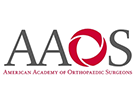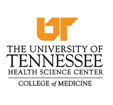Increased Age, Operative Time, ASA Classification, Functional Dependency, and Comorbidity Burden are Risk Factors for Adverse Events after Meniscectomy and Meniscus Repair: 10 Year Analysis of 64,223 Patients
To utilize the NSQIP database to identify risk factors for 30-day adverse events and hospital readmission following isolated and unilateral meniscectomy or meniscus repair.
Readmissions more likely for wheelchair users after shoulder replacement
Wheelchair users are nearly three times more likely to experience hospital readmission following total shoulder arthroplasty (TSA), according to UT Southwestern Medical Center researchers. The findings, published in the Journal of Clinical Medicine, highlight the importance of comprehensive preoperative counseling and risk assessment for patients who use wheelchairs.
Torn ACLs may heal with therapy instead of surgery, though some surgeons aren’t convinced
It’s long been thought that a torn ACL, or anterior cruciate ligament, has limited ability to heal on its own and requires surgery. Recent research suggests that a nonsurgical treatment, including physical therapy, could be as effective.
Causes and Treatment for Outer, Side, and Inner Hip Pain
There are many possible causes of hip pain. They include serious ones, like a fracture or joint infection, and less serious causes, like bursitis.1 Your healthcare provider can diagnose the cause and help to plan your treatment.
The Best and Worst Shoes for Knee Osteoarthritis
If you’re one of the millions of Americans living with knee osteoarthritis (the wear-and-tear form of arthritis), it’s important to find a supportive pair of shoes.
-
Dickson
-
ONEC1TY - Nashville






